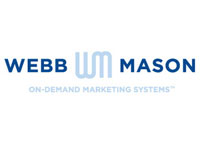
A key benefit for organizations that develop a network of channel partners and affiliates is that they have more means to extend brand messaging and drive product/service awareness to new markets.
However, to truly succeed at reaching specific audiences in particular geographic areas, vendors must empower partners to go-to-market, both via traditional means such as print advertising, as well as digital methods like SEO, SEM, and social media.
But multiple industry studies point out that national brands and vendors are missing out on the localization opportunity: A Borrell Associates study showed that out of $1.7 billion in online co-op marketing dollars available for local affiliates, an estimated $450 million goes unused, Shane Vaughan, CMO of Balihoo, shared in a recent Channel Marketer Report article.
“Localization is most essential for brands that have a service or consulting element tied to the product,” Vaughan said. “For example, verticals such as insurance, financial services, healthcare, and high-end home products (cabinets, hot tubs, etc). When purchasing these types of products, consumers want to have a relationship with the company and the service provider.”
With more B2B and B2C buyers tapping digital channels to research local content and information, businesses must rethink the solutions they’re leveraging to empower their partners. If they don’t they may face a series of challenges and obstacles.
Jared Shusterman, CEO and Managing Partner of SproutLoud, uncovered a variety of problems brands can suffer from if they don’t optimize local marketing:
- Branding inconsistency when local marketers advertise on their own;
- Incongruous local messaging that contradicts national ads;
- Improper offers and promotions;
- National vs. local product misalignment in marketing: The wrong product mix for a local community because the national marketing isn’t localized;
- Brand switching: Brands spend money driving customers in to local affiliates that push competitor products/services at the point of sale; and
- Inefficient and costly local execution due to local versioning and unique requirements.
“Brands have focused so long on the national branding strategy only to be undermined by its affiliates, resellers and channel partners at the local level,” Shusterman told Channel Marketer Report. “Brands are realizing that the two must go hand-in-hand so local sales and marketing are in alignment.”
3 Steps To Optimizing Local Marketing Strategies
As brands, vendors and manufacturers look more to their partners to extend brand and product awareness, there are three key best practices they can focus on.
1. Revamp co-op marketing programs: Buyers’ continued shift to online information gathering and researching processes has led to a gaping hold in co-op marketing programs: a lack of digital focus. Research from the Interactive Advertising Bureau (IAB) and the Local Search Association (LSA) revealed a similar trend in missed opportunities, with fewer than 33% of manufacturers considering digital channels when mapping out a co-op ad strategy.
“That’s less than 10%, which is surprisingly low when you consider that most studies recommend a spend of about 30% in digital,” Vaughan reported in a recent blog post.
Moreover, organizations must strive to make co-op programs measurable, Vaughan added: “Implementing the procedures and technology that allow this tracking give national brands the visibility to understand what and who is working at the local level and increase their investment in these categories.”
2. Automate the process: Best-in-class organizations are investing in automated marketing technologies to ensuring branding is consistent but tailored to unique trends in specific geographies. The Localize To Optimize study from the CMO council reported that 30% of brands have embraced local marketing automation technologies and platforms and another 27% are investigating them.
“It is imperative to choose not only a technology, but also a supporting service system that is comprehensive, turnkey, and automated,” Shusterman advised. “The less time needed from the local partner, the better. Software and technology is a must-have to automate localization of marketing programs and content, but the end-user of this system is not a self-service user. They need stronger hand holding, more automation that does it for them, more programs that are turn-key with the strategy and tactical aligned from the beginning.”
3. Focus on education and enablement: Providing seamless access to marketing resources and collateral is important, but it is pointless if partners aren’t empowered to use them effectively. Live and web-based training programs and ongoing education help ensure partners and affiliates are up-to-date on marketing trends and best practices across channels, as well as the resources and tools made available to them.
“The best providers of distributed local marketing technology solutions will offer a strong service and support organization to help with training and education at launch and ongoing,” said Lori Alba, Marketing Director for brandmuscle. “E-blasts, how-to-guides and direct mail are all great ways to keep local affiliates informed and engaged. “In addition to these services, some local affiliates also need to know where to go for help in terms of creating local media plans, purchasing and buying media.”
Social media in particular should be a top priority for one-to-one training, Vaughan added, largely because optimal sharing and communication tactics through these channels are owned and developed by specific partners and affiliates. “These activities are fundamentally local,” he said. “Therefore, they can’t and shouldn’t be automated or owned by the national brand.”
Channel Affiliates And Partners Make Moves To Digital Marketing
More buyers are turning to we-based tools to research products and services. Research released by Google indicates that a majority (73%) of online search activity now is related to local content.
Organizations are ensuring they are found at a more local level by investing more in digital marketing channels, such as search, social media and email, to establish market presence, and better connect with buyers in a more personalized and intimate manner.
“Companies are shifting dollars to local digital tactics because these tactics reach the consumer when and where the consumer is investigating products,” Vaughan said. “Plus, from an aggregated perspective, digital program, when designed from the beginning for measurement, are easier to track and measure. This means PPC, SEO, email, local web sites and display all are going to grow rapidly in 2013.”
However, organizations must focus on leveraging marketing strategies that their target customers will reply more strongly to based on their unique wants and needs.
“Yes, digital marketing tactics may deliver outstanding ROI for one client or even industry vertical,” Alba said. “But it may not be the most effective way of spending for another. An effective mix is often the best answer and we evaluate and make recommendations to our clients and their local affiliates on a case-by-case basis.”
Many organizations rely on standard marketing resource management systems to ensure collateral is co-brandable and available on demand. Yet a lack of partner adoption is a key challenge and pain point, preventing these solutions from being effective across the channel.
“National brands are spending millions on technology – and making hundreds of million more available via co-op programs – yet their local resellers are not adopting their platforms,” Vaughan said. “This typically stems from a fundamental lack of understanding of the reseller. National brands need to better understand how and why their local resellers execute marketing tactics — or why not — and ensure their programs hit the key hot buttons with these local marketers: easy, affordable and effective.”
Due to the proven inefficiency of co-op programs and some MRM systems, many organizations are steering in a new direction, according to Shusterman: distributed marketing systems that are built with the technology and supporting services in mind to handle and support local affiliates.
“Of course as local marketing spend is moving digitally, our brand clients are offering opportunities to move beyond traditional into social media and digital mediums like local search,” Shusterman added. “As distributed systems become fundamental in executing local marketing strategy, you’ll see a concerted effort by brands to merge traditional, social and digital into one plan that can be executed simultaneously by the local marketer.”

 The Problem: With local searches constituting 24% of all Google queries, and 45% of all Yelp searches happening on a mobile app, the interdependence of brands and local businesses is more evident than ever before. Businesses rely on brands for marketing resources and assets promoting the products and services that bring customers through the door. Brands rely on businesses to push those campaigns out to a pool of targeted, local clientele. So why is it so hard to bring these two together?
The Problem: With local searches constituting 24% of all Google queries, and 45% of all Yelp searches happening on a mobile app, the interdependence of brands and local businesses is more evident than ever before. Businesses rely on brands for marketing resources and assets promoting the products and services that bring customers through the door. Brands rely on businesses to push those campaigns out to a pool of targeted, local clientele. So why is it so hard to bring these two together?



 Zift Solutions, a leading provider of channel marketing and management solutions, has launched a fully integrated software platform that automates the spectrum of activities required for sales, marketing, and operational processes.
Zift Solutions, a leading provider of channel marketing and management solutions, has launched a fully integrated software platform that automates the spectrum of activities required for sales, marketing, and operational processes. Averetek
Averetek Salesforce
Salesforce Datto, Inc. a leading provider of total data protection solutions, announced the official launch of a new global marketing automation platform to support its 6,000 managed service providers (MSP).
Datto, Inc. a leading provider of total data protection solutions, announced the official launch of a new global marketing automation platform to support its 6,000 managed service providers (MSP). Email fatigue is growing more common for partners as most are now working with many vendors at any given time and end up feeling bombarded by associated, incoming communications. As incoming emails pile up, yours may be completely overlooked. How do you float to the top of their inbox?
Email fatigue is growing more common for partners as most are now working with many vendors at any given time and end up feeling bombarded by associated, incoming communications. As incoming emails pile up, yours may be completely overlooked. How do you float to the top of their inbox? WinGreen Marketing Systems, Inc.
WinGreen Marketing Systems, Inc. When a partner recognizes a major opportunity for a vendor to benefit from an unexpected market opportunity, success can hinge on the ability of the brand to help the partner react quickly, efficiently, and effectively.
When a partner recognizes a major opportunity for a vendor to benefit from an unexpected market opportunity, success can hinge on the ability of the brand to help the partner react quickly, efficiently, and effectively. Problem: Successfully executing channel marketing initiatives can be a challenge for organizations, large or small. Not only are you relying on partners to actively market your products and generate demand, but do so in a way that represents your brand accurately. The simple truth is that most can’t, due to limited time, skills and resources. And, without the right capabilities, they are less likely to participate in channel marketing programs, making conversion of leads into sales difficult through partners.
Problem: Successfully executing channel marketing initiatives can be a challenge for organizations, large or small. Not only are you relying on partners to actively market your products and generate demand, but do so in a way that represents your brand accurately. The simple truth is that most can’t, due to limited time, skills and resources. And, without the right capabilities, they are less likely to participate in channel marketing programs, making conversion of leads into sales difficult through partners. Channel marketers may finally have their own industry bible.
Channel marketers may finally have their own industry bible. 

 “Our ChannelStack offering combines the strength of our core product with the power of tightly integrated best-of-breed applications to address the business requirements and workflows of companies managing and selling through the indirect channel,” said Dave Goulet, Chief Technology Officer at LogicBay.
“Our ChannelStack offering combines the strength of our core product with the power of tightly integrated best-of-breed applications to address the business requirements and workflows of companies managing and selling through the indirect channel,” said Dave Goulet, Chief Technology Officer at LogicBay.


 Because more partners recognize the need to market themselves more aggressively, getting those messages across is a little easier, she acknowledged. As the business landscape changes for partners, especially managed service providers, more are taking charge of their marketing programs. “They’re a newer for breed of reseller, and rather than being reactive, they do understand the value of proactively making sure that they know how to market their business.”
Because more partners recognize the need to market themselves more aggressively, getting those messages across is a little easier, she acknowledged. As the business landscape changes for partners, especially managed service providers, more are taking charge of their marketing programs. “They’re a newer for breed of reseller, and rather than being reactive, they do understand the value of proactively making sure that they know how to market their business.”







